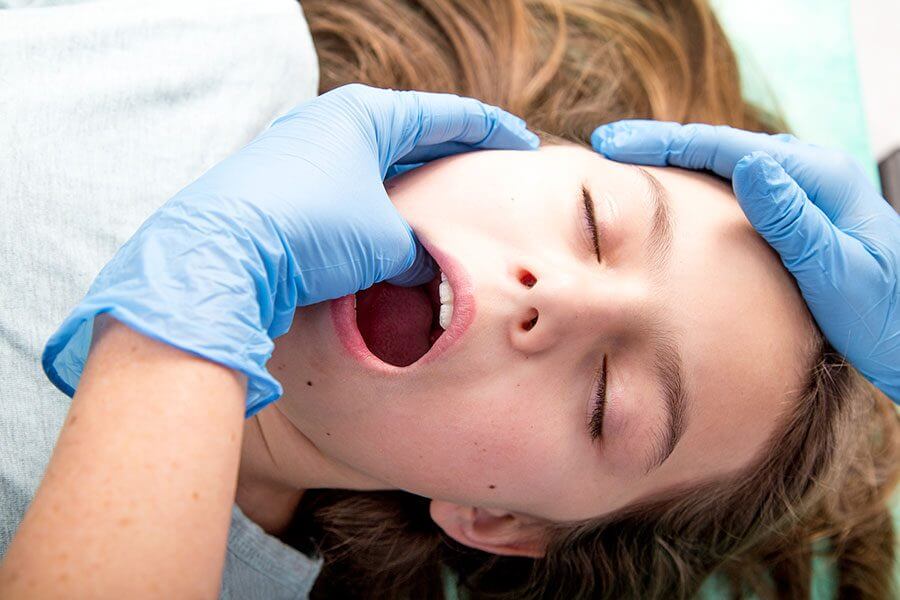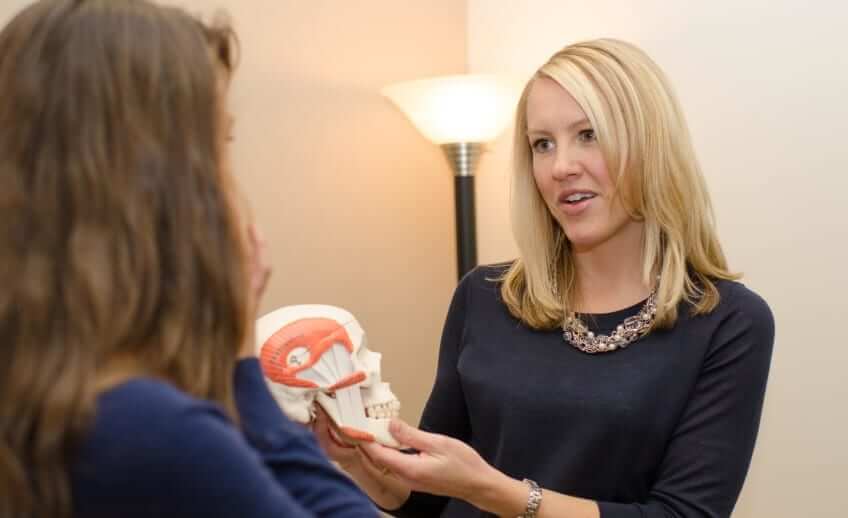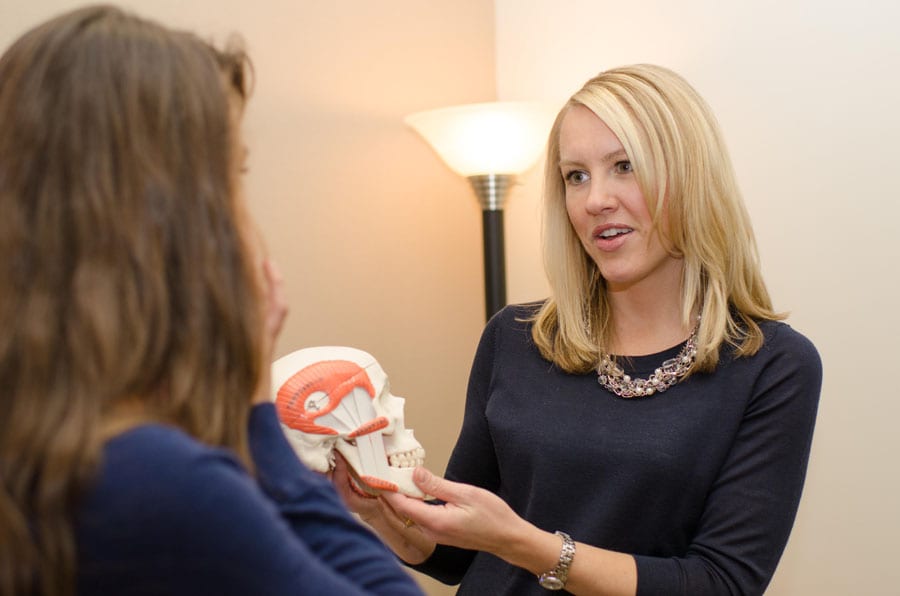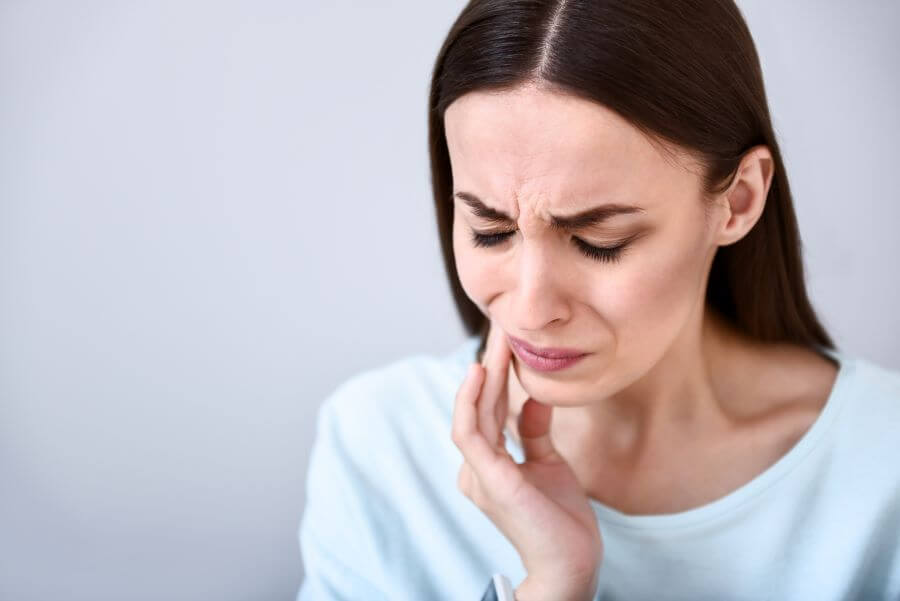Treatment of your TMJ Disorder involves a multifactorial approach. We work with your dentist or surgeon, as applicable. Our goal is to achieve pain relief as soon as possible, and then to restore normal motion, relaxation, and posture to prevent recurrence of your symptoms. Saunders physical therapists specialize in TMJ disorder treatment – choosing Saunders means you will be treated by an experienced professional.
The Saunders TMJ Treatment Philosophy
Musculoskeletal Evaluation: We look at your posture and its potential contribution to TMJ dysfunction. We often discover muscle imbalances of the jaw and neck. We perform a biomechanical evaluation of the temporomandibular joint, cervical spine and craniofacial region. We inquire about habits that can contribute to symptoms, including jaw clenching or grinding the teeth.
Treatment: Treatment may include manual therapy such as joint mobilization, craniosacral therapy, and myofascial release techniques. Neuromuscular re-education also plays a large role to improve muscle imbalances and decrease strain on the TMJ and cervical spine.
We may use therapeutic modalities such as iontophoresis or ultrasound. Instruction in diet and habit modification is important to decrease irritation to the tissues. Finally, we help you independently manage symptoms through a home exercise program.




